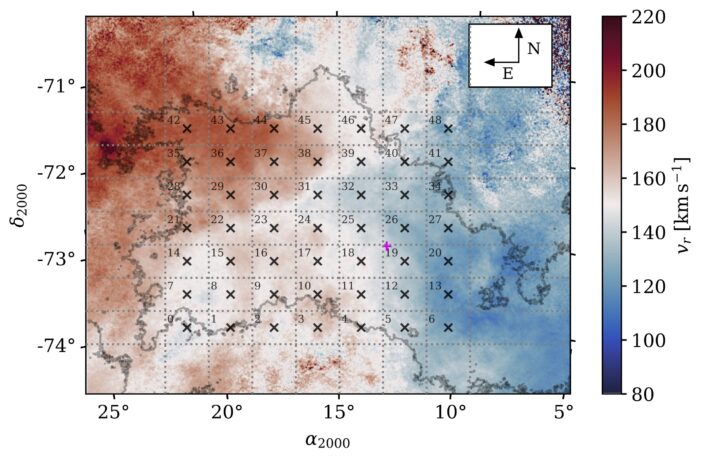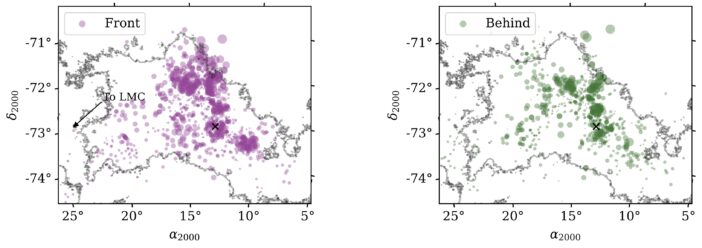Editor’s Note: Astrobites is a graduate-student-run organization that digests astrophysical literature for undergraduate students. As part of the partnership between the AAS and astrobites, we occasionally repost astrobites content here at AAS Nova. We hope you enjoy this post from astrobites; the original can be viewed at astrobites.org.
Title: A Galactic Eclipse: The Small Magellanic Cloud is Forming Stars in Two, Superimposed Systems
Authors: Claire E. Murray et al.
First Author’s Institution: Space Telescope Science Institute
Status: Published in ApJ
The Small Magellanic Cloud is one of the most-studied galaxies in our universe due to its proximity (just 200,000 light-years away), and because its structure and elements are so distinctly different from our own Milky Way galaxy. For example, it has a lower metallicity and is therefore an excellent laboratory for understanding the physics of the interstellar medium at lower-metallicity conditions. The interstellar medium is the gas and dust between stars within a galaxy (as opposed to the circumgalactic medium, which is the gas and dust between galaxies).
Despite its potential utility as a nearby parallel probe of galaxy evolution, the Small Magellanic Cloud’s structure is still relatively unknown. For example, stars with different ages appear to be distributed through the galaxy differently. The oldest stellar populations appear to be distributed spherically without rotating, whereas younger stars are rotating. Furthermore, the structure of the Small Magellanic Cloud’s interstellar medium indicates that it has potentially been severely disrupted by recent interactions with the Large Magellanic Cloud. Modeling the evolution and interaction history of the Small Magellanic Cloud from its conflicting observational constraints will help inform our understanding of its future.
The authors combined observations of neutral hydrogen (HI) gas emission and radial velocity (velocities along our line of sight) measurements to model the Small Magellanic Cloud’s evolutionary history. Because the interstellar medium of the galaxy is dominated HI emission (hydrogen gas that has not been ionized by any astrophysical source like a star), observing this atomic gas allows us to trace the bulk properties of the interstellar medium. As shown in Figure 1, the radial velocities derived from the emission of the HI gas show two distinct structures moving away from us — one at a higher speed and one at a lower speed.

Figure 1: The radial-velocity map derived from HI emission of the Small Magellanic Cloud shows two distinct structures moving away from us, one at high radial velocity (~170 km/s) in red on the left, and one at low velocity in blue on the right (~130 km/s). The magenta cross represents the center of the Small Magellanic Cloud. [Adapted from Murray et al. 2024]

Figure 2: The stars in the “front” structure and stars in the “behind” structure, derived from the extinction and radial velocities of these stars. [Murray et al. 2024]
In conclusion, these results indicate the Small Magellanic Cloud is clearly composed of two distinct star-forming systems. One possible explanation for these results is that these two systems are actually remnants of different galaxies, potentially indicated by the fact that they have different metallicities. Alternatively, the authors propose that the “behind” structure is actually tidal debris from an interaction with the Large Magellanic Cloud. Ultimately, further observational constraints, such as direct distance measurements to the interstellar medium components and simulations of the Small Magellanic Cloud’s evolution, will help paint a more detailed picture of its history and future.
Original astrobite edited by Jessie Thwaites.
About the author, Abby Lee:
I am a graduate student at UChicago, where I study cosmic distance scales and the Hubble tension. Outside of astronomy, I like to play soccer, run, and learn about fashion design!

